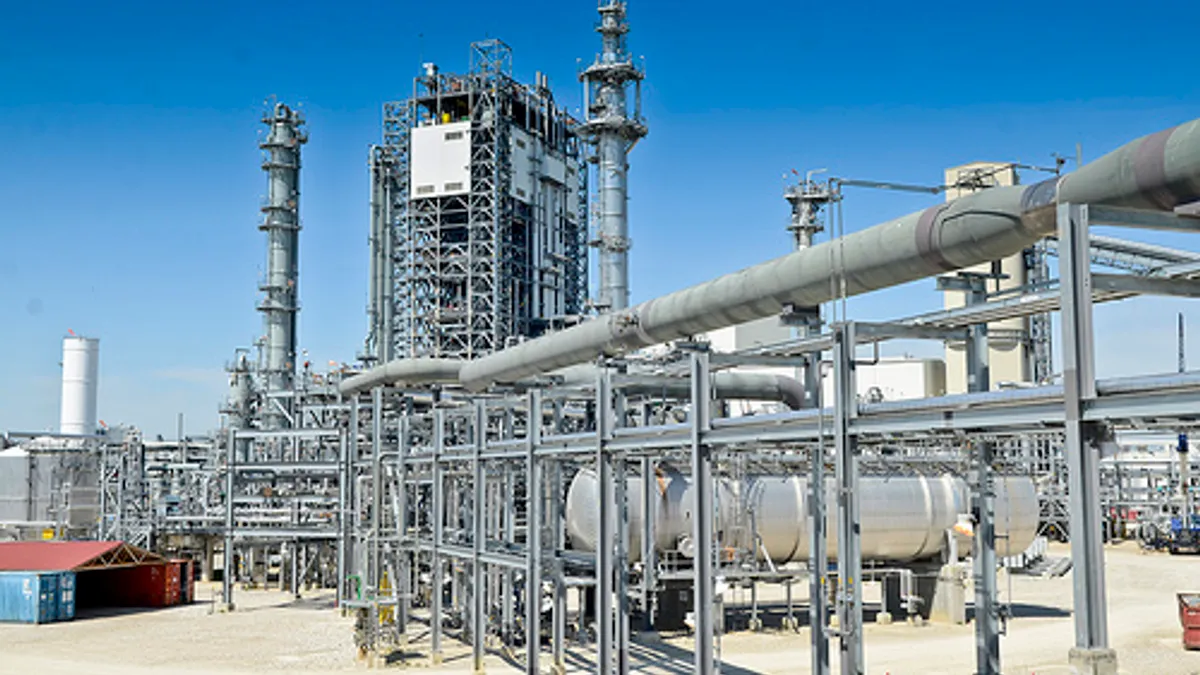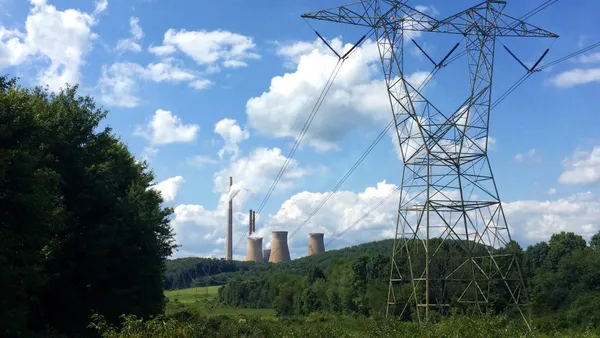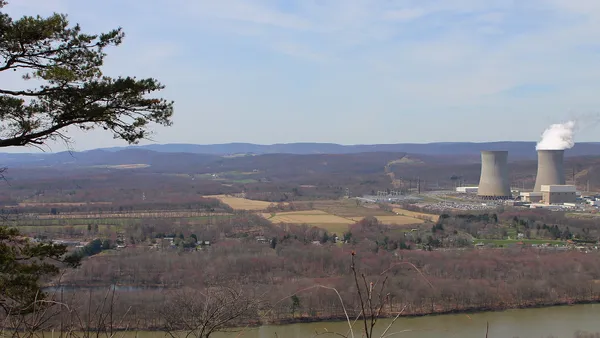Dive Brief:
- The 2015 Integrated Resource Plans (IRP) filed last month by Duke Energy Progress and Duke Energy Carolinas proposed 480 MW of more new capacity by 2029 than last year's IRP, Charlotte Business Journal reports. Critics claim the facilities are unnecessary, saying Duke's existing coal fleet is a way to meet the need for more reserve capacity.
- The environmental nonprofit NC WARN said Duke's increased winter reserve margins, which underpin the need for new generation, are suspicious because demand is rising slower than previously anticipated.
- Duke, however, says the changes to the winter resource mix, including a reduced amount of solar generation, have made the new plants necessary.
Dive Insight:
Charlotte Business Journal reports on a brewing fight over new generation in the Carolinas, where Duke Energy says demand growth is slowing but additional reserve capacity is still needed during the winter.
That proposal strikes NC WARN as suspicious, according to the nonprofit's Executive Director Jim Warren. "Demand is down, and we’ve complained for some time that there is a glut of juice available in the Southeast,” he told the Charlotte Business Journal. “What better way to claim under these circumstances that you still need to build new plants than to inflate the reserves needed and claim you need a boost in standby power.”
But according to Duke, the additional reserves are needed because the winter resource base has changed over time. Less solar is available in those months, load peaks at different times, and demand response tied to cooling systems is unavailable. “When you start peaking in the winter, some resources for responding to those peaks are not available as they would be in the summer,” Duke spokesperson Randy Wheeless said.
Duke filed its IRP last month, which identified the need for 480 MW of new capacity by 2029 in addition to the new capacity planned in the 2014 IRP. There's also the more than 1.6 GW of natural gas-fired capacity that Duke plans to construct in 2030, one year beyond the IRP's outlook. But Duke Carolinas and Duke Progress are only expecting demand growth of 1% annually for the next 15 years, lower than the 1.2% growth predicted in last year's IRP. The IRP also shows peak demand dropping during summer and winter.
Even so, the nonprofit said the utility could fulfill its need for more generation by pushing its coal power plants, once the workhorses of Duke's power fleet, to full capacity, saying it has more existing capacity than is now being used. But at the same time, such a move would increase carbon emissions from Duke Energy's fleet, which would hinder the utility's ability to meet environmental regulations such as the Environmental Protection Agency's Clean Power Plan, the Charlotte Business Journal reports.
The Charlotte Business Journal reports that NC WARN is expected to challenge Duke's assumptions in its IRP, saying the organization has been a longtime vocal critic of Duke's policies and growth projections.
Correction: A previous version of this article said that Duke Energy proposed 480 MW of new capacity in its 2015 IRP. That is incorrect. Duke Energy proposed 480 more megawatts of new capacity in its 2015 IRP than it did in its 2014 IRP.














